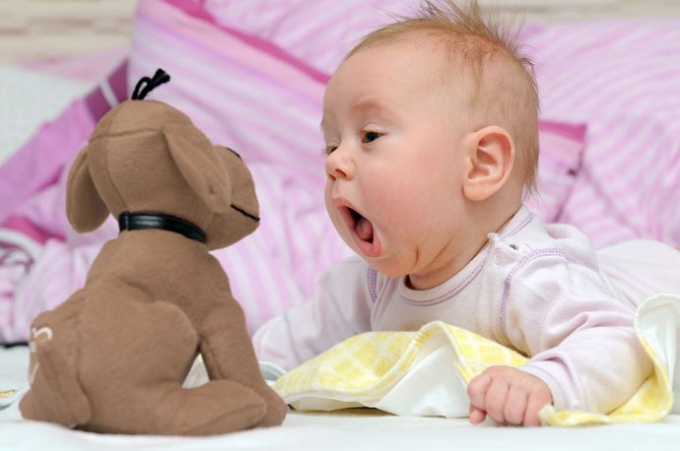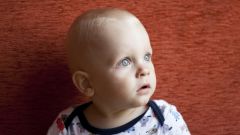Instruction
1
At 0-2 months, the child who in the first week after his birth is meaningless ran his eyes around the room, begins to respond to touch, sounds, to distinguish faces, to smile at others.
2
2-4 months baby holds her head, lying on his stomach. He looked carefully at the objects that are around him. He likes bright toys. So you need to hang over the crib and the stroller rattles, baby to beat them with handles.
3
In 5-6 months the child already holds in the arms of any small items (toys, rattles). In any case do not let your baby cheap Chinese things harmful to the body crumbs. Please note: all toys produced in this country, stated "Children over three years."
It is also possible to slowly seat the baby, propped up on all sides with pillows. So, the baby will survey the room from a different angle. But before that, consult a doctor: some children have health problems which make them possible to start at a later age.
5-6-month-old baby is already beginning to speak in syllables, pronouncing "mA", "PA", "BA", etc. the Child tries to taste, so do not be alarmed that he drags into his mouth. It is a normal human reflex.
Also the toddler at this age may begin to crawl. If that happens, do not be afraid, because all children develop differently.
It is also possible to slowly seat the baby, propped up on all sides with pillows. So, the baby will survey the room from a different angle. But before that, consult a doctor: some children have health problems which make them possible to start at a later age.
5-6-month-old baby is already beginning to speak in syllables, pronouncing "mA", "PA", "BA", etc. the Child tries to taste, so do not be alarmed that he drags into his mouth. It is a normal human reflex.
Also the toddler at this age may begin to crawl. If that happens, do not be afraid, because all children develop differently.
4
In 7-8 months the baby tries to sit up, and that you need him to help in every way. Take it by the handles and slightly pull up.
Also the baby is trying to stand up. At this age, he walks along the crib holding her back. He utters strange sounds. Don't be put off by this, because the baby talking in his own language, trying to convey his emotions and feelings.
The child is sure to hold items, carefully examines them, throws and shifts from one hand to another. He also, finding any little detail, trying otkovyryat her. Make sure that the child doesn't ingest anything. To do this, all buttons, paper clips and other dangerous items must be in the place where the baby will not be able to get.
Also the baby is trying to stand up. At this age, he walks along the crib holding her back. He utters strange sounds. Don't be put off by this, because the baby talking in his own language, trying to convey his emotions and feelings.
The child is sure to hold items, carefully examines them, throws and shifts from one hand to another. He also, finding any little detail, trying otkovyryat her. Make sure that the child doesn't ingest anything. To do this, all buttons, paper clips and other dangerous items must be in the place where the baby will not be able to get.
5
9-10 months, the baby moves around the house, holding onto a support. As soon as he staggers, reaches the wall, leaning against her, Nicole quickly runs to the right place. You're supposed to insert in all outlet special caps, from the tables to remove all of the items that the baby can hurt himself.
6
At 11-12 months, the child walks, able to speak short words (Mama, Baba, Papa, give, on, etc.).
Note
All kids develop differently. For example, if your year-old child will not walk, this does not mean that it lags behind in development. So he is not yet ready.
All children also have different weight, height. It all depends on individual circumstances. Most importantly — every month to be examined by a doctor and carefully monitor the health and development of the baby.
All children also have different weight, height. It all depends on individual circumstances. Most importantly — every month to be examined by a doctor and carefully monitor the health and development of the baby.

